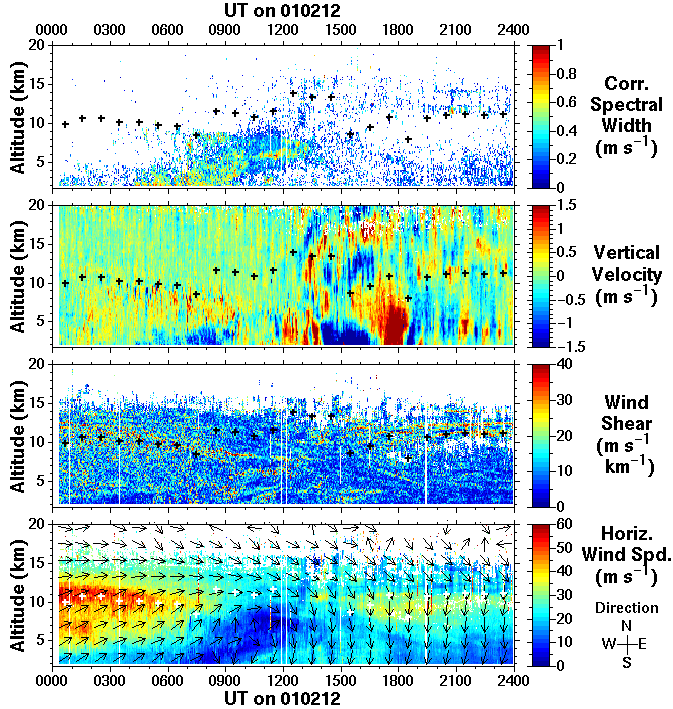
Although the spectral width contains information about the variance of vertical velocities observed by the radar, i.e. the turbulence intensity, in practice this is not the only, nor even necessarily the most signficant, contribution. Beam broadening is a result of the finite radar beam width and increases with increasing horizontal wind speed. It can often be the dominant cause of spectral broadening, particularly for wind speeds in excess of 30 m s-1, hence the lack of useful corrected spectral width data in the figure above. The data here correspond to observations made by a vertically directed beam; those made at off-vertical angles require additional correction factors to be taken into account. The thin layer of enhanced corrected spectral width around 6 km, between 1030 and 1300 UT, is apparantly related to the breaking of the mountain lee waves at a critical layer and implies that the wave energy is being dissipated through turbulence. The corresponding sharp rotation of the horizontal wind vector shows up as a region of high shear. It is not so clear what is causing the enhanced spectral widths prior to 1030 UT over a more widespread altitude range.

 THE NERC MST RADAR FACILITY AT ABERYSTWYTH
THE NERC MST RADAR FACILITY AT ABERYSTWYTH